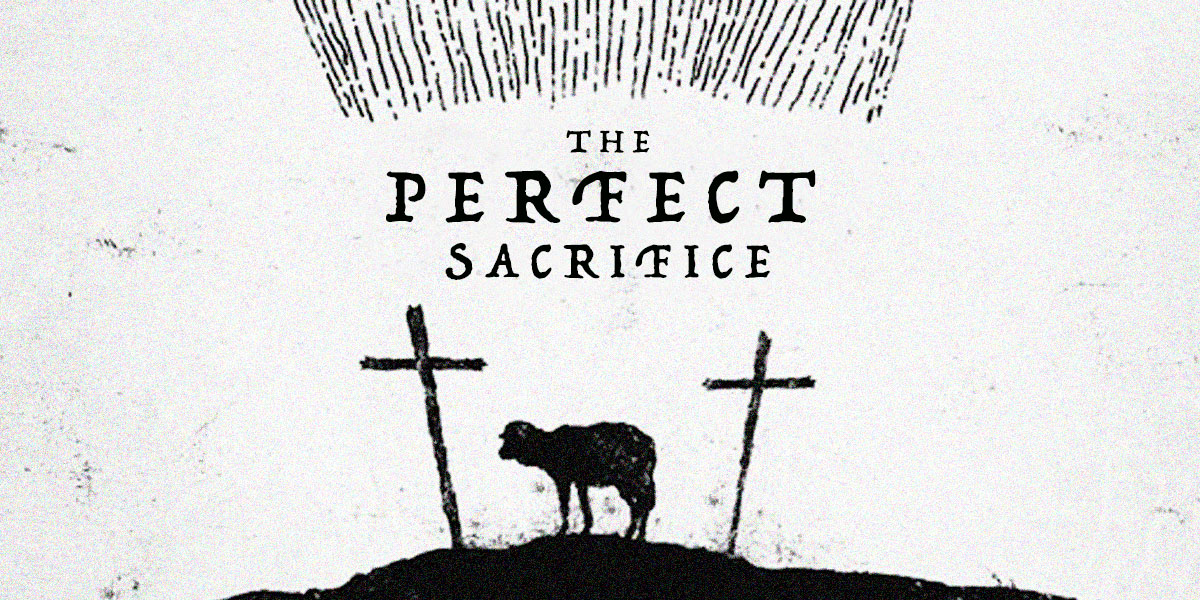
The Diamond Doctrine: Atonement
By Pastor Bill
Supplemental teaching for session Ten of Wayne Grudem’s 20 Life-Transforming Truths
To understand the Bible’s teaching on atonement it may be helpful to consider a beautiful, big gemstone. One time on vacation I stood patiently in line to cast a gaze at Harry Winston’s famous Hope Diamond (weighing 45.52 carats) on display at the National Museum of Natural History in Washington, D.C. Its beauty was irresistible. I was amazed that, while there was just one source of light, all I had to do was shift my gaze just a tad to the left or to the right, and the facets of the Hope Diamond refracted that light into a spectrum of gorgeous colours. In a similar way, while the atonement is one masterful work of God when lit up by the word of God its various aspects reflect a whole spectrum of glorious, colourful images that call us to worship.
The word “atonement” is strictly speaking not found in the Bible. But sometimes in the history of the church, it has been deemed useful to coin a new word that represents an inductive pulling together of several biblical truths into one concept. That’s why we have words like “Trinity,” “incarnation,” and “omnipotence.” And that’s why in order to help us think and talk about the most important work accomplished by God for our benefit, we speak of the “atonement.”
Atonement refers to a reconciled state of “at-one-ness” between parties that were formerly alienated in some manner. The following chart is not at all meant to be exhaustive, but under the light of Scripture, you can see a wide variety of images come into focus to explain God’s wonderful work of atonement for the Christian.
| IMAGES OF ATONEMENT | MEANING | SCRIPTURE |
|---|---|---|
|
Sacrifice |
The basic way God accomplished atonement for human sin – Jesus gave up his life to bear our sin. |
Hebrews 9:26; 1 Corinthians 5:7; Ephesians 5:2 |
|
Penal Substitution |
Jesus, in his atoning sacrifice, took our place and his substitution was penal because our offense (sin) incurred a penalty (death) which Jesus satisfied on the cross. |
Isaiah 53:4-12; Romans 3:21-26; Galatians 3:13-14 |
|
Redemption |
Jesus’ atoning sacrifice actually paid the ransom price to secure our freedom from the bondage of guilt and sin. |
Mark 10:45; Luke 1:68; Ephesians 1:7 |
|
Reconciliation |
Jesus’ atoning sacrifice resolves the two-way estrangement between God and humans and turns it into fellowship and relational peace. |
Romans 5:10; 2 Corinthians 5:18-19; Colossians 1:20-22 |
|
Expiation |
Jesus’ atoning sacrifice expiated, that is, it took away or canceled our guilt, our liability to suffer sin’s punishment of condemnation. |
Isaiah 43:25; Jeremiah 33:8; Revelation 1:5b |
|
Propitiation |
Jesus’ atoning sacrifice propitiated God, that is, it averted or turned aside God’s rightful wrath against us due to our guilty sins with the result that we are found favourable in His sight. |
Romans 3:25 (ESV; NASB); 1 John 2:2; 4:10 (ESV; NASB) |
|
Victory |
Jesus’s atoning sacrifice defeated the devil, his cohorts, powers, death, and hell. |
Genesis 3:15; Hebrews 2:14-15; 1 Corinthians 15:55-57; Colossians 2:15; 1 John 3:8 |
|
Revelation |
Jesus’ atoning sacrifice was a revelation and the preeminent practical demonstration of divine love. |
John 15:3; Romans 5:8; Galatians 2:20 |
|
Example |
Jesus’ atoning sacrifice was the supreme pattern of self-sacrifice for us to follow a) for the benefit of others and b) for dying to personal sin. |
John 15:12; 1 Peter 2:24; 1 John 3:16 |
Having surveyed my incomplete chart above, let me suggest three guidelines:
1) One facet does not a diamond make. While some find the variety of images for atonement to be problematic implying incoherence or at best a fragmentary doctrine, to the contrary, the Bible’s teaching on atonement is rich and many-sided because no single concept is adequate to expound its full meaning. It is the interrelatedness and interdependence of many facets that contribute to a fine diamond’s brilliance. Sometimes it’s true that less is more, but sometimes it’s not. Just as a diamond’s beauty includes the harmony of its complexity and symmetry cut to dazzle, so also God’s work of atonement through Christ is multi-faceted in order to attract our stunned sense of awe, humility, and worship.
2) All diamond jewelry is mounted. Because they’re valuable and exquisite, diamonds are always carefully mounted in a prong, or channel, or bezel, or some such setting. And likewise, since there are so many facets to the Atonement Diamond and these are not philosophical formulations but the way the Bible itself presents what was achieved at Calvary, God obviously thinks the atonement of Christ is strikingly a big deal. It’s no accident that our word “crucial” comes from the Latin crux (cross) embedded in the word “crucifixion.” On the landscape of reality, Christ crucified is crucially situated at the crossroads of God and humanity. The meaning of the cross is irreducibly central to our Christian faith. For Paul, the message that “Christ died for our sins…was buried [and] raised on the third day” is a matter of “first importance” (1 Corinthians 15:3-4).
3) All facets of a diamond are not equal. While the Atonement Diamond is lustrous that’s not to say that each facet is equally important. All the Bible’s pictures of the atonement are important but it would be misleading to suggest that none is more fundamental. Each image of the atonement finally finds its resolution in the fact that Jesus died in place of sinners. Arguably, if you were to use a jeweler’s magnifying glass to look deeply into each of the facets to the underlying reality, that is, if you were to ask enough why and how questions, you will find at the very heart of the atonement penal substitution.
Think it through. Sacrifice – why did Jesus give up his life? To die our death by bearing the penalty of our sins. Redemption – how did Jesus pay the price to purchase us from the slave market of sin? With his own blood, he paid the debt we could not pay to free us from sin’s punishment. Reconciliation – how did Jesus resolve the broken relationship between God and humanity? By standing in our place, the just for the unjust, he took the punitive wrath of God rightfully owed to us by dying to forgive us our sins and restore peace between us and God. Victory – how did Jesus triumph over Satan, his forces of evil, death and hell? While Satan had exercised domination over us bringing us under the curse and condemnation of the law, because Christ took our condemnation and redeemed us from the law’s curse by fully satisfying all its just requirements, he broke Satan’s power to enslave us. In this way, victory over evil was won through Christ’s life and sacrificial death. Over and over again, from multiple perspectives, the Bible grounds the cross (the symbol of atonement) in Jesus taking on himself the punishment sinners deserved.
And this confirms an inescapable conclusion. The various facets of the Atonement Diamond, each of them with a sparkle in their own right, cluster around the brilliance and centrality of penal substitution. Substitution means Jesus in place of us or instead of us. Penal means punishment (think penal colony).
If the Son of God had not become a curse for us dying in our place, taking the punishment we deserved for our sins, we could never be saved by faith or receive the gift of eternal life. Our depravity is too great; our guilt is too deep; God is perfectly holy. Therefore, we must never soften the edges of the gospel message. No matter how strange, offensive, or liable to be misunderstood, we cannot reimagine the gospel as something more culturally palatable like world renewal or social justice or mere benevolence. To decenter the core achievement of the cross – Jesus dying as a substitute for condemned-to-death people – is not merely to mute but to mangle the gospel message. And to spread any mangled gospel is deadly – like giving gummy bear vitamins to someone who desperately needs an intravenous antibiotic to treat their bacterial meningitis.
Over the years, things haven’t changed. In the 1st century Greco-Roman world, Paul knew that the message of the cross was insane to those around him. He knew that by preaching the message of the cross he would incur the world’s ridicule. Like today, the Hope Diamond of Atonement is seen to be a dirty piece of useless gravel. But even in the face of sure rejection he could say, “I preach Christ crucified.” In fact, by way of overstatement, he presses home the focal importance of the cross: “I resolved to know nothing while I was with you except Jesus Christ and him crucified” (1 Corinthians 2:2). And Paul’s thrill remains just as relevant for us today: “May I never boast except in the cross of our Lord Jesus Christ, through which the world has been crucified to me, and I to the world” (Galatians 6:14).
HT: Bruce Demarest, The Cross & Salvation (Wheaton, IL: Crossway Bks, 1997); Donald MacLeod, Christ Crucified: Understanding the Atonement (Downers Grove, IL: IVP Academic, 2014); Four Views: The Nature of the Atonement (Downers Grove, IL: IVP Academic, 2006).
